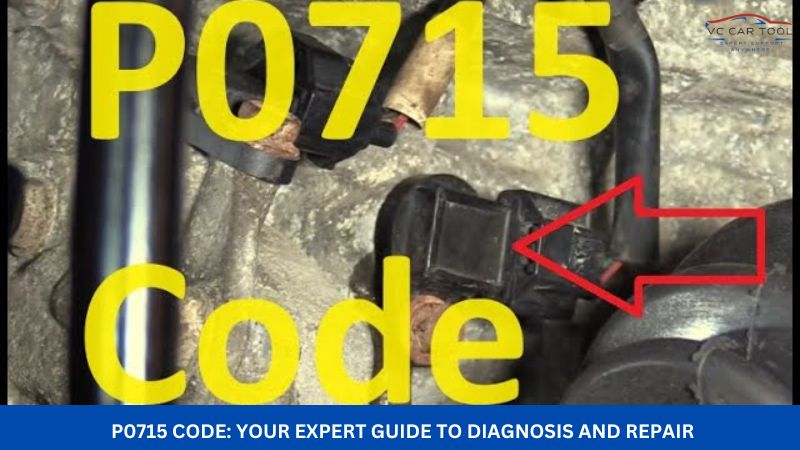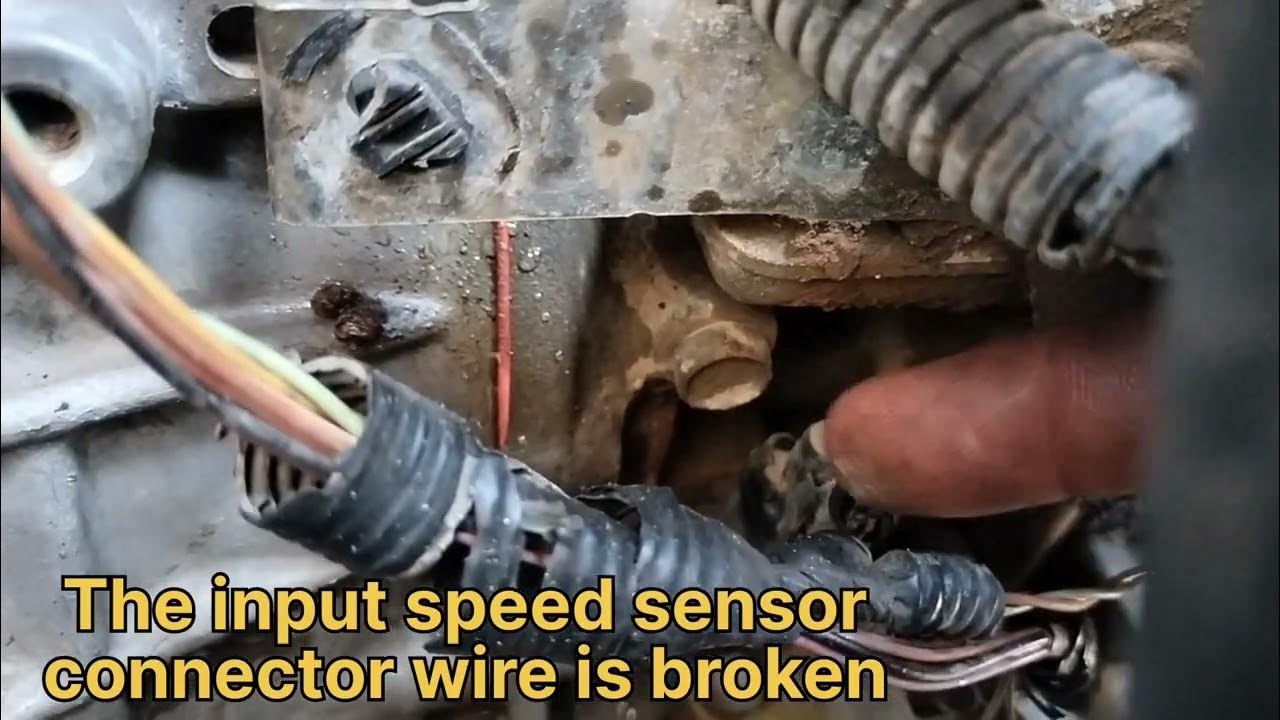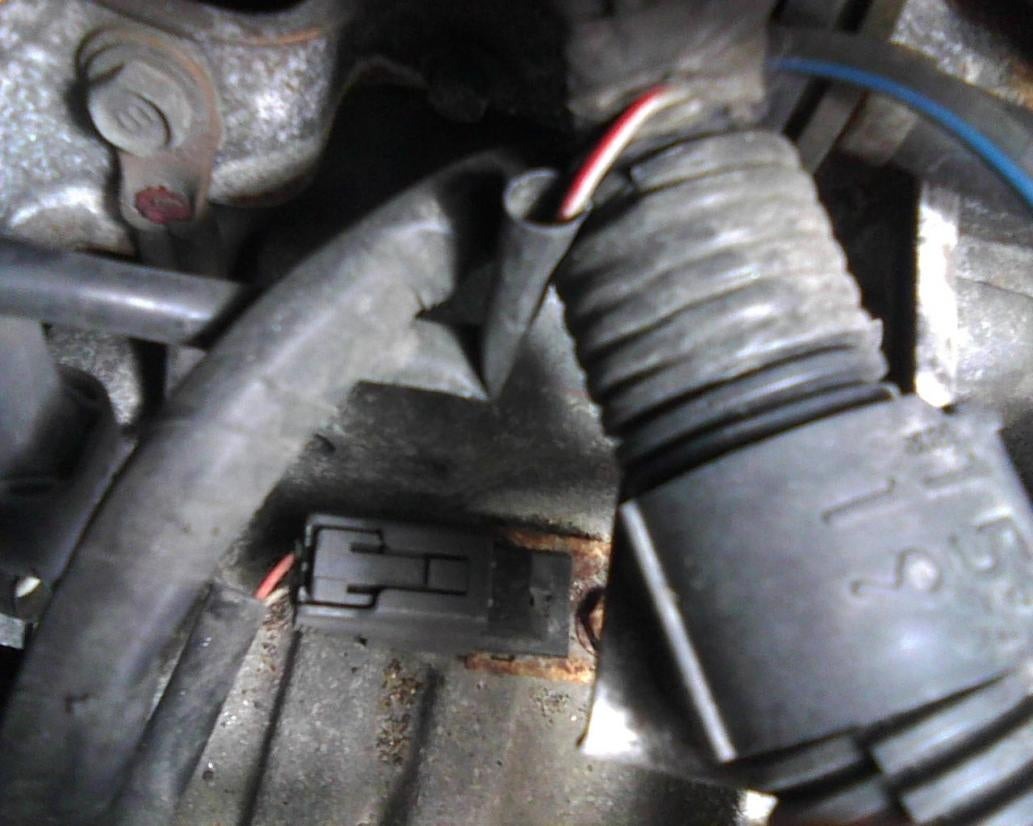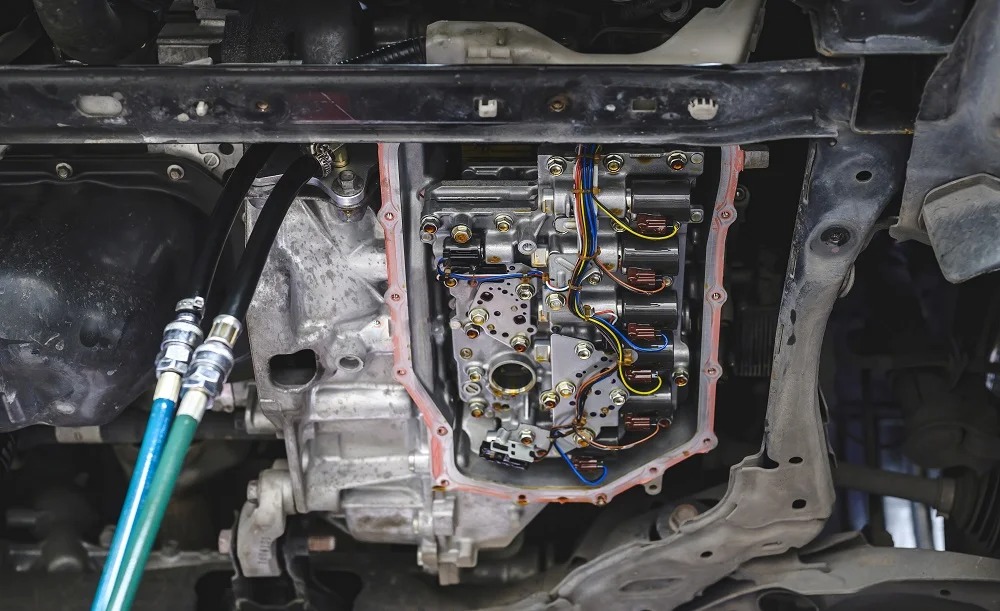P0715 Code: Your Expert Guide to Diagnosis and Repair
The P0715 code indicates a malfunction in the Turbine/Input Shaft Speed Sensor A circuit of your vehicle’s transmission, which is a common issue that can lead to performance problems. This comprehensive guide, brought to you by VCCarTool, will delve into the intricacies of this code, providing you with the knowledge and potential solutions to resolve it efficiently, including expert remote diagnostic services.
If you’re unsure about repairing, diagnosing, or programming the P0715 code, contact VCCarTool via WhatsApp: +1 (901) 414 – 1927 for assistance to avoid causing more serious errors.

1. What Does the P0715 Code Mean?
The P0715 code, in simple terms, signifies that your vehicle’s Powertrain Control Module (PCM) has detected an issue with the input speed sensor “A” circuit. The input speed sensor monitors the rotational speed of the transmission’s input shaft. According to a study by the National Institute for Automotive Service Excellence (ASE), faulty speed sensors are a leading cause of transmission-related problems. When the PCM receives incorrect or no data from this sensor, it sets the P0715 code and illuminates the check engine light. This can also trigger other symptoms, such as transmission slipping or erratic shifting.

1.1 Symptoms Associated with P0715
Recognizing the symptoms associated with the P0715 code is crucial for timely diagnosis and repair. Some common symptoms include:
- Check Engine Light: This is the most obvious symptom. The light may be steady or flashing.
- Transmission Slipping: The transmission may slip out of gear or hesitate when shifting.
- Erratic Shifting: The transmission may shift abruptly or at the wrong times.
- Limited Gear Function: The transmission may be stuck in a single gear, often second, entering “limp mode”.
- Decreased Fuel Economy: Due to inefficient transmission operation.
- Stalling: In some cases, the engine may stall, especially at low speeds.
If you notice any of these symptoms, it’s important to address the issue promptly. Contact VCCarTool via WhatsApp: +1 (901) 414 – 1927 for expert remote diagnostic assistance.
1.2 Common Causes of the P0715 Code
Understanding the common causes of the P0715 code can help you pinpoint the problem and take appropriate action. Here are some frequent culprits:
- Faulty Input Speed Sensor: The sensor itself may be defective and require replacement.
- Wiring Issues: Damaged, corroded, or loose wiring to the sensor can disrupt the signal.
- Connector Problems: Corroded or damaged connectors can prevent proper communication.
- Low Transmission Fluid: Insufficient fluid can cause the sensor to malfunction.
- Contaminated Transmission Fluid: Debris or contaminants in the fluid can interfere with sensor readings.
- PCM Failure: In rare cases, a faulty PCM can trigger the P0715 code.
- Torque Converter Issues: Problems with the torque converter can also affect the input speed sensor.

2. Diagnosing the P0715 Code: A Step-by-Step Guide
Diagnosing the P0715 code requires a systematic approach to identify the root cause of the problem. Here’s a step-by-step guide to help you through the process:
2.1 Preliminary Checks
Before diving into complex diagnostics, perform these basic checks:
- Check Transmission Fluid Level: Ensure the fluid level is within the specified range.
- Inspect Transmission Fluid Condition: Look for signs of contamination or debris. The fluid should be bright red and translucent.
- Inspect Wiring and Connectors: Check for any visible damage, corrosion, or loose connections.
2.2 Using an OBD-II Scanner
An OBD-II scanner is an indispensable tool for diagnosing the P0715 code. Here’s how to use it:
- Connect the scanner to the OBD-II port.
- Retrieve the stored trouble codes. Note all codes, as there may be other related issues.
- Clear the codes and perform a test drive to see if the P0715 code returns.
- Use the scanner to monitor live data from the input speed sensor.
If the sensor is functioning correctly, the data should change as the vehicle’s speed changes. A stagnant reading indicates a potential sensor issue. VCCarTool offers advanced diagnostic tools that provide real-time data analysis, helping you pinpoint the problem quickly. Contact us via WhatsApp: +1 (901) 414 – 1927 for more information.
2.3 Testing the Input Speed Sensor
To determine if the input speed sensor is faulty, perform the following tests:
- Visual Inspection: Check the sensor for any physical damage.
- Resistance Test: Use a multimeter to measure the resistance of the sensor. Compare the reading to the manufacturer’s specifications. An out-of-range reading indicates a faulty sensor.
- Voltage Test: Check the voltage supply to the sensor. Ensure it matches the specified voltage.
- Signal Test: Use an oscilloscope to monitor the signal from the sensor while the vehicle is running. A distorted or absent signal indicates a problem.
2.4 Checking the Wiring Harness
Thoroughly inspect the wiring harness for any issues:
- Visual Inspection: Look for any signs of damage, such as cuts, abrasions, or melted insulation.
- Continuity Test: Use a multimeter to check the continuity of each wire in the harness. A lack of continuity indicates a broken wire.
- Short Circuit Test: Check for any shorts to ground or power.

2.5 Examining the Connector
Inspect the connector for the input speed sensor:
- Visual Inspection: Check for any corrosion, bent pins, or damage.
- Clean the Connector: Use a contact cleaner to remove any corrosion or debris.
- Ensure a Secure Connection: Make sure the connector is properly seated and locked in place.
3. Repairing the P0715 Code: Practical Solutions
Once you’ve diagnosed the cause of the P0715 code, it’s time to implement the necessary repairs. Here are some potential solutions:
3.1 Replacing the Input Speed Sensor
If the input speed sensor is faulty, replacement is the most common solution. Here’s how to do it:
- Locate the Input Speed Sensor: Consult your vehicle’s repair manual to find the sensor’s location. It’s typically located on the transmission case.
- Disconnect the Electrical Connector: Carefully disconnect the connector from the sensor.
- Remove the Old Sensor: Use the appropriate wrench or socket to remove the old sensor.
- Install the New Sensor: Install the new sensor, ensuring it’s properly tightened to the specified torque.
- Reconnect the Electrical Connector: Reconnect the electrical connector to the sensor.
- Test the Vehicle: Clear the P0715 code and perform a test drive to ensure the problem is resolved.
3.2 Repairing Wiring Issues
If you find any damaged wiring, repair it promptly:
- Identify the Damaged Section: Locate the exact point of damage.
- Cut and Strip the Wires: Cut out the damaged section and strip the ends of the wires.
- Splice the Wires: Use a wire connector or solder to splice the wires together.
- Insulate the Wires: Use electrical tape or heat shrink tubing to insulate the splice.
- Secure the Harness: Secure the wiring harness to prevent future damage.
3.3 Cleaning or Replacing Connectors
If the connector is corroded or damaged, clean or replace it:
- Clean the Connector: Use a contact cleaner to remove any corrosion or debris.
- Replace the Connector: If the connector is severely damaged, replace it with a new one. Ensure the new connector is properly wired and connected.
3.4 Addressing Transmission Fluid Issues
If the transmission fluid is low or contaminated, address the issue:
- Check for Leaks: Inspect the transmission for any leaks. Repair any leaks before adding fluid.
- Add Transmission Fluid: Add fluid to the correct level. Use the recommended type of fluid for your vehicle.
- Change Transmission Fluid and Filter: If the fluid is contaminated, change it along with the filter.
3.5 PCM or TCM Replacement
In rare instances, the PCM or Transmission Control Module (TCM) may be the source of the problem. Replacement of either of these components should be performed by a qualified technician. VCCarTool can assist with PCM and TCM programming to ensure proper functionality. Contact us via WhatsApp: +1 (901) 414 – 1927 for expert support.
4. Preventing the P0715 Code: Proactive Measures
Preventing the P0715 code involves regular maintenance and proactive measures:
4.1 Regular Maintenance
Follow these maintenance tips to prevent transmission problems:
- Check Transmission Fluid Regularly: Inspect the fluid level and condition regularly.
- Change Transmission Fluid and Filter: Follow the manufacturer’s recommended service intervals for fluid and filter changes.
- Inspect Wiring and Connectors: Periodically inspect the wiring and connectors for any damage or corrosion.
- Address Leaks Promptly: Repair any transmission leaks as soon as they are detected.
4.2 Driving Habits
Adopt these driving habits to minimize stress on the transmission:
- Avoid Aggressive Acceleration: Smooth acceleration reduces stress on the transmission components.
- Proper Shifting Techniques: Use proper shifting techniques to prevent unnecessary wear and tear.
- Avoid Overloading: Do not overload the vehicle, as this can strain the transmission.
5. Advanced Diagnostic Techniques
For complex cases, advanced diagnostic techniques may be necessary:
5.1 Using a Scan Tool with Advanced Features
Advanced scan tools offer features such as:
- Real-Time Data Monitoring: Monitor sensor data in real-time to identify intermittent issues.
- Component Testing: Perform specific tests on the input speed sensor and related components.
- Bi-Directional Control: Command the PCM to perform certain functions to test the system.
5.2 Electrical Testing with a Multimeter and Oscilloscope
A multimeter and oscilloscope are essential for advanced electrical testing:
- Multimeter: Use a multimeter to measure voltage, resistance, and continuity.
- Oscilloscope: Use an oscilloscope to monitor signal waveforms and identify intermittent issues.
5.3 Consult with a Professional
If you’re unable to diagnose or repair the P0715 code, consult with a professional mechanic. VCCarTool offers expert remote diagnostic services to assist you with complex issues. Contact us via WhatsApp: +1 (901) 414 – 1927 for personalized support.
6. Cost of Repairing the P0715 Code
The cost of repairing the P0715 code can vary depending on the cause and the extent of the damage. Here’s a breakdown of potential costs:
- Input Speed Sensor Replacement: $100 – $300 (including parts and labor)
- Wiring Repair: $50 – $200
- Connector Replacement: $20 – $100
- Transmission Fluid and Filter Change: $100 – $300
- PCM Replacement: $500 – $1500 (including programming)
These are estimated costs and can vary depending on your location and the specific repair shop. VCCarTool provides cost-effective diagnostic solutions, helping you save money on repairs. Contact us via WhatsApp: +1 (901) 414 – 1927 for a consultation.
7. Choosing the Right Parts
When repairing the P0715 code, it’s essential to use high-quality parts. Consider the following:
- OEM Parts: Original Equipment Manufacturer (OEM) parts are designed to meet the exact specifications of your vehicle.
- Aftermarket Parts: Aftermarket parts can be more affordable but may not offer the same quality or reliability as OEM parts.
- Trusted Brands: Choose parts from reputable brands known for their quality and durability.
VCCarTool can provide guidance on selecting the right parts for your vehicle. Contact us via WhatsApp: +1 (901) 414 – 1927 for expert advice.
8. The Role of VCCarTool in Resolving P0715 Codes
VCCarTool stands as a beacon of expertise, ready to assist you in navigating the complexities of the P0715 code and other automotive diagnostics. Understanding the challenges faced by auto repair shops, especially the increasing complexity of modern vehicles, VCCarTool offers a suite of services designed to streamline the diagnostic and repair process.
Here’s how VCCarTool can be your trusted ally:
- Remote Diagnostic Support: VCCarTool provides remote diagnostic services that connect your shop with seasoned experts in real-time. Our professionals can guide your technicians through the diagnostic process, helping to accurately identify the root cause of the P0715 code.
- Access to Comprehensive Databases: Gain access to an extensive library of diagnostic information, repair procedures, and technical service bulletins. This invaluable resource ensures that your team is equipped with the latest data to tackle any automotive challenge.
- Expert Programming and Coding Assistance: Modern vehicles often require precise programming and coding for component replacements. VCCarTool offers expert programming services to ensure that new parts are correctly integrated with the vehicle’s electronic systems.
- Training and Skill Development: Stay ahead of the curve with VCCarTool’s training programs. We provide courses on advanced diagnostics, coding, and programming, enabling your team to enhance their skills and expertise.
- Tool and Equipment Recommendations: Choosing the right tools and equipment can significantly impact your shop’s efficiency. VCCarTool offers tailored recommendations to help you select the best tools for your specific needs.
- Cost-Effective Solutions: By leveraging VCCarTool’s services, auto repair shops can reduce diagnostic times, minimize errors, and optimize repair processes. This translates to increased efficiency, lower costs, and improved customer satisfaction.
VCCarTool is committed to empowering auto repair professionals with the knowledge, tools, and support needed to excel in today’s automotive landscape. By partnering with VCCarTool, you’re not just fixing cars; you’re elevating your business to new heights. Contact us via WhatsApp: +1 (901) 414 – 1927. Email: [email protected]. Website: vccartool.com.
9. Case Studies: Real-World Examples of P0715 Resolution
Examining real-world case studies can provide valuable insights into resolving the P0715 code:
9.1 Case Study 1: Faulty Input Speed Sensor
- Vehicle: 2010 Honda Accord
- Symptoms: Check engine light, erratic shifting
- Diagnosis: The OBD-II scanner revealed the P0715 code. Further testing confirmed a faulty input speed sensor.
- Solution: The input speed sensor was replaced, and the code was cleared. The transmission returned to normal operation.
9.2 Case Study 2: Wiring Issues
- Vehicle: 2012 Ford F-150
- Symptoms: Check engine light, transmission slipping
- Diagnosis: The OBD-II scanner revealed the P0715 code. A visual inspection revealed damaged wiring to the input speed sensor.
- Solution: The damaged wiring was repaired, and the code was cleared. The transmission returned to normal operation.
9.3 Case Study 3: Contaminated Transmission Fluid
- Vehicle: 2008 Toyota Camry
- Symptoms: Check engine light, decreased fuel economy
- Diagnosis: The OBD-II scanner revealed the P0715 code. The transmission fluid was found to be contaminated with debris.
- Solution: The transmission fluid and filter were changed, and the code was cleared. The transmission returned to normal operation.
These case studies highlight the importance of thorough diagnosis and appropriate repair techniques. If you encounter any challenges, VCCarTool is here to assist you. Contact us via WhatsApp: +1 (901) 414 – 1927 for expert support.
10. FAQs About the P0715 Code
Here are some frequently asked questions about the P0715 code:
10.1 Can I drive with the P0715 code?
Driving with the P0715 code is not recommended, as it can cause further damage to the transmission. It’s best to address the issue as soon as possible.
10.2 How do I clear the P0715 code?
The P0715 code can be cleared using an OBD-II scanner. However, the code may return if the underlying issue is not resolved.
10.3 Can low transmission fluid cause the P0715 code?
Yes, low transmission fluid can cause the P0715 code. Ensure the fluid level is within the specified range.
10.4 Is the input speed sensor difficult to replace?
The difficulty of replacing the input speed sensor depends on the vehicle. Consult your vehicle’s repair manual for specific instructions.
10.5 Can a faulty PCM cause the P0715 code?
In rare cases, a faulty PCM can cause the P0715 code. PCM replacement should be performed by a qualified technician.
10.6 How often should I change my transmission fluid?
You should change your transmission fluid according to the manufacturer’s recommended service intervals.
10.7 What type of transmission fluid should I use?
Use the type of transmission fluid recommended by the manufacturer for your vehicle.
10.8 Can VCCarTool help me diagnose the P0715 code remotely?
Yes, VCCarTool offers expert remote diagnostic services to assist you with complex issues. Contact us via WhatsApp: +1 (901) 414 – 1927 for personalized support.
10.9 What are the symptoms of a bad transmission speed sensor?
Symptoms include check engine light, erratic shifting, transmission slipping, and decreased fuel economy.
10.10 How much does it cost to diagnose a P0715 code?
The cost to diagnose a P0715 code can vary depending on the shop. VCCarTool provides cost-effective diagnostic solutions, helping you save money on repairs.
11. Ready to Solve Your P0715 Code?
Don’t let the P0715 code keep you off the road. With the right knowledge and tools, you can diagnose and repair the issue effectively. And remember, VCCarTool is here to support you every step of the way.
Is your auto repair shop grappling with the complexities of modern vehicle diagnostics, particularly the dreaded P0715 code? Are you seeking solutions to enhance your shop’s efficiency, reduce diagnostic times, and ensure accurate repairs?
VCCarTool understands the challenges you face. That’s why we offer a comprehensive suite of services designed to empower your shop and elevate your diagnostic capabilities.
Here’s how VCCarTool can transform your business:
- Expert Remote Diagnostics: Connect with seasoned professionals in real-time to accurately diagnose and resolve the P0715 code and other complex issues.
- Access to Extensive Databases: Equip your team with the latest diagnostic information, repair procedures, and technical service bulletins.
- Programming and Coding Assistance: Ensure seamless integration of new components with expert programming and coding services.
- Training and Skill Development: Stay ahead of the curve with advanced training programs in diagnostics, coding, and programming.
- Tool and Equipment Recommendations: Select the best tools for your specific needs with tailored recommendations from VCCarTool.
Ready to take your auto repair shop to the next level?
Contact VCCarTool today for a consultation. Let us show you how our innovative solutions can streamline your operations, reduce costs, and improve customer satisfaction.
Don’t wait! Contact VCCarTool now:
- WhatsApp: +1 (901) 414 – 1927
- Email: [email protected]
- Website: vccartool.com
Let VCCarTool be your trusted partner in automotive diagnostics and repair!
